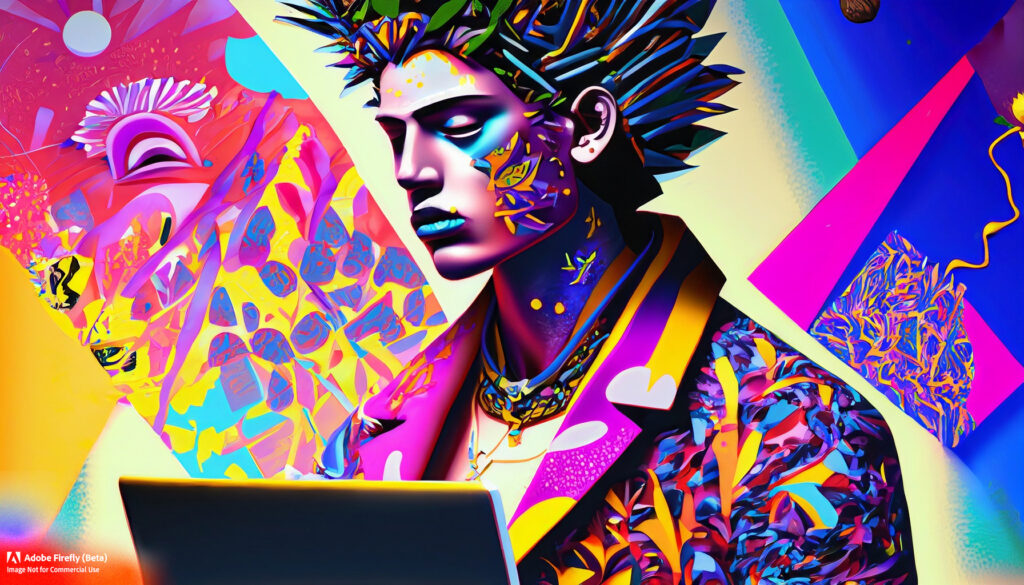The Role of Technology in Redefining Art
Art has always been a topic of much debate, and with the advent of AI-generated art, the question of what is art has become even more contentious. Many traditional artists are quick to dismiss AI art as derivative nonsense that requires no skill or effort. But is this really the case? And does the use of technology in art make it any less valid?
Throughout history, new technologies and techniques have emerged that have simplified the creative process. Each new development was met with criticism and gatekeeping from traditional artists who believed that these new methods were inferior and lacked skill. For example, when photography first emerged, it was dismissed by painters as a mere mechanical process that required no artistic talent. And when digital photography and editing software became popular, traditional photographers were quick to criticize it as a cheap and easy way to create images.
However, just because new technologies make the creative process easier, it doesn’t mean that they’re inferior. In fact, utilizing the latest technology and techniques can still produce work that elicits the same emotional and intellectual response as traditional art. Many famous artists didn’t even personally do most steps of the production process of their art. Many employed assistants who took care of the more tedious work like shading. This was true for the great masters, studio figures like Andy Warhol, and mainstream media production for various mediums.
Ultimately, art is the expression of an abstract idea that elicits an emotional or intellectual response passed from one person’s mind to another. The artist’s original idea may be warped through interpretations but ultimately it is this mix of cultural shorthand and indefinable nuance that makes art so powerful. Working under certain restraints can be admirable, but it doesn’t mean that using technology is any less valid. Art is all about ideas, and ideas are meant to be shared, critiqued and improved upon. Traditional artists should be proud of their skills but accepting of the fact that new mediums requiring new skills will always emerge over time.
The emergence of AI-generated art is not a threat to traditional artists, but rather an opportunity to expand the creative dialog and welcome a new wave of talent into the artistic community. Just as an increasing global literacy rate over the last 200 years has allowed for countless outside perspectives to be voiced and heard which led to countless new schools of thought, the democratization of art will usher in an ever-growing talent pool of artists who previously were unable to express themselves. Their work may be seen as derivative, but ultimately all art is. All human behavior is ultimately based on observation and emulation. Art is how we distill complex emotions and perspectives in a way that’s easily digestible by other people.
There is certainly an economic threat to traditional artists but this is a problem people of all disciplines are facing with advances in technology. Money is in essence a unit of exchanging people’s time which is largely retroactive as we often pay for the time needed to acquire the skills to provide a good or service. As the time investment for each good or service decreases it naturally calls into question how much it’s worth but on a larger scale we must ask what is money when time becomes less scarce?
Lately people tend to focus on what happens when their occupation becomes obsolete as if their industry exists in a vacuum. The world is going to change profoundly in the next decade. The level of joy and sadness will skyrocket as things progress. Art is and has always been crucial in coping with societal changes and personal struggles. Its role is much larger than a source of income or recognition. It is ultimately our coping mechanism for dealing with life – one that we need now more than ever.
As the world continues to evolve, so too does the world of art. The emergence of AI-generated art is just one example of how technology is changing the way we create and experience art. While there will always be traditionalists who cling to the old ways, it’s important to recognize that new technologies and techniques can open up new possibilities for artistic expression. By embracing these changes and encouraging all forms of art, we can create a richer and more diverse creative landscape. Ultimately, the question of what is art is a subjective one, and the answer will continue to evolve as our society and technology advances. But one thing is certain: the human need for creative expression will never go away, and it will always find new ways to manifest itself.




